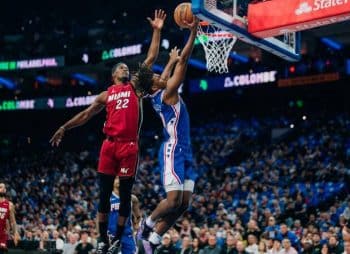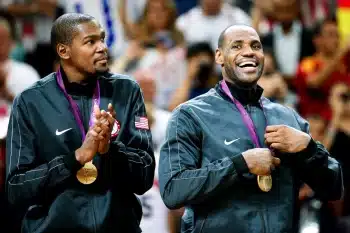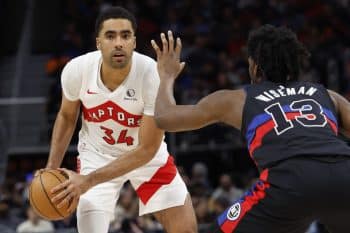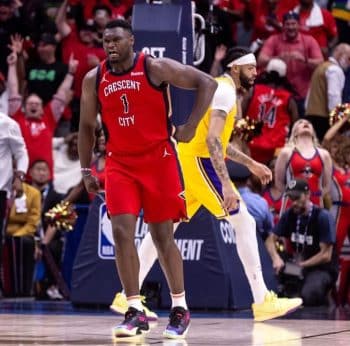NBA
Head to Head: NBA Executive of the Year?

It’s not always easy to determine which general manager should win Executive of the Year. Unlike player comparisons (where we can look at things like statistics), we need to consider factors like whether a team is rebuilding or contending, whether they exceeded expectations and whether the players that were added during the offseason and throughout the season have paid off, among several other things. In today’s Head to Head, Ben Dowsett and Jesse Blancarte debate who deserves to win the 2015-16 NBA Executive of the Year award.
Becoming elite in the NBA is obviously very difficult, but staying there for extended periods is even tougher. Maintaining both the talent and drive year after year in the most competitive league in the world, particularly with the true peaks of the game’s best players often lasting only a few seasons, is a careful balancing act.
It’s no wonder, then, that Spurs General Manager R.C. Buford is so frequently mentioned as a viable candidate for Executive of the Year honors – and he should be among the frontrunners, and perhaps at the top, again this season.
The additions San Antonio has made in the last nine months are impressive enough in name value alone. LaMarcus Aldridge is the headliner, of course, and bringing in veteran David West to come off the bench behind him while retaining superstar Kawhi Leonard and mainstays Tim Duncan, Danny Green and Manu Ginobili was an excellent haul. Around the margins, Buford also found roster spots for Boban Marjanovic and Jonathon Simmons, both of whom have done well in depth roles, and added Andre Miller and Kevin Martin in buyout season.
The numbers involved make the additions even more impressive – Aldridge got big money, but West came for a paltry fraction of what his option in Indiana would have paid him, and Green’s extension was downright criminal. Duncan took what’s become his standard hometown discount, and Ginobili surely could have squeezed several million extra out of a few other GMs somewhere.
The true value of Buford’s (and Gregg Popovich’s, among others) carefully developed culture, though, manifested itself in the gymnastics the Spurs were able to perform under the cap due to the trust between themselves and several incumbent players.
Leonard, a legitimate full-max superstar, sacrificed security and dutifully waited his turn for his big deal. Had he demanded the money immediately (or the previous summer) or threatened to sign elsewhere, San Antonio’s ability to bring in a name like Aldridge would have been damaged or even destroyed. Green and Ginobili likewise waited to sign until after Aldridge inked his deal, with the wink-wink knowledge that San Antonio’s Bird Rights would allow the team to retain them over the cap after using their space on Aldridge.
There are very few other organizations league-wide where this sort of thing is even moderately realistic, and almost certainly none where the number of moving pieces could have been this expertly coordinated. That the moves facilitated one of the most dominant teams of the last decade only hammers home how effective the plan was from day one. It may not be the hip vote given his candidacy seemingly every year, but R.C. Buford deserves recognition for mastering this chessboard so thoroughly yet again.
Towards the end of July of last year, Portland Trail Blazers general manager Neil Olshey had a good sense that LaMarcus Aldridge would not be coming back to the Blazers. Rather than sitting around and hoping things would work out, Olshey started his aggressive plan to rebuild his team around his star point guard, Damian Lillard.
From the end of July until the February trade deadline, Olshey worked aggressively to clear out the roster, add in young talent and restock the Blazers’ assets. Here is a basic outline of what Olshey did, excluding some other minor moves:
- Traded Nicolas Batum for Gerald Henderson and Noah Vonleh.
- Traded Steve Blake and the rights to Rondae Hollis-Jefferson (2015-23rd) to Brooklyn Nets for Mason Plumlee and the rights to Pat Connaughton.
- Renounced the rights to LaMarcus Aldridge, Wesley Matthews, Robin Lopez, Arron Afflalo, Alonzo Gee and Earl Watson.
- Signed Al-Farouq Aminu to a four-year, $30 million contract.
- Signed Ed Davis to a three-year, $20.0 million contract.
- Signed Damian Lillard to a five-year, $120.4 million extension.
- Traded a protected (top-55) 2020 second-rounder to Portland Trail Blazers for Mo Harkless.
- Traded a Cleveland Cavaliers 2020 second-rounder back to the Cleveland Cavaliers for Anderson Varejao and a protected 2018 first-rounder.
Other general managers may have tried to salvage the roster by adding some veteran players in free agency and through trades. Instead, Olshey opted to tear things down, bring back assets by trading away guys who would likely leave eventually (like Batum) and add young, affordable free agents who still have room for substantial improvement (like Aminu and Davis). While not every move is, or has been a clear slam dunk, each was made strategically and with the bigger picture in mind.
The idea was that the Blazers would grow together organically, reserve flexibility and in a few seasons, cash in that flexibility to turn the team into a contender. However, like the Phoenix Suns a few seasons back, the Blazers have found more success this season than anyone reasonably anticipated. The Blazers are now 41-36, sixth in the Western Conference standings and on track to face the Oklahoma City Thunder in the postseason.
Some may fear that the Blazers, like the Suns, may get caught up in their success and try to skip a few steps in the rebuild process, which could ultimately backfire, as it did in Phoenix. However, Olshey is a big-picture general manager that understands the importance of maximizing assets and cap-flexibility, but doing so in a time-frame that makes sense both short-term and long-term. Unlike other general managers, Olshey is a proven forward-thinking executive who won’t easily be caught up in the moment.
Now, because of Olshey, the Blazers have 12 players that are 25 or younger, along with a few other players that are still relatively young and still have some room to keep improving. The Blazers can also generate as much as $42 million in cap space this offseason.
With a young core of talent (that is already very competitive), cap flexibility and a top-notch head coach in Terry Stotts, the Trail Blazers are well-positioned to become one of the better all-around teams in the NBA over the next few seasons and Neil Olshey is the reason why, which is why he should be the 2015-16 NBA Executive of the Year.











